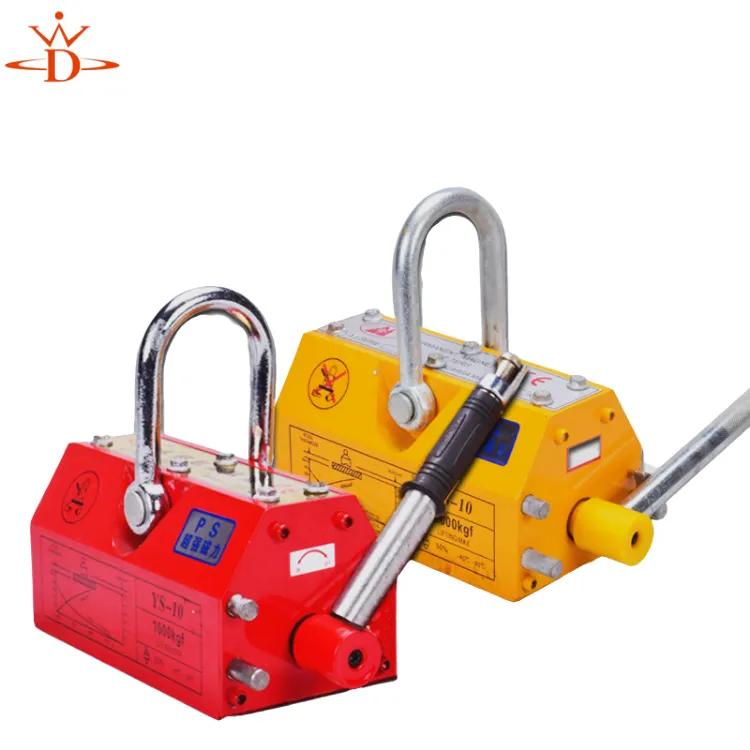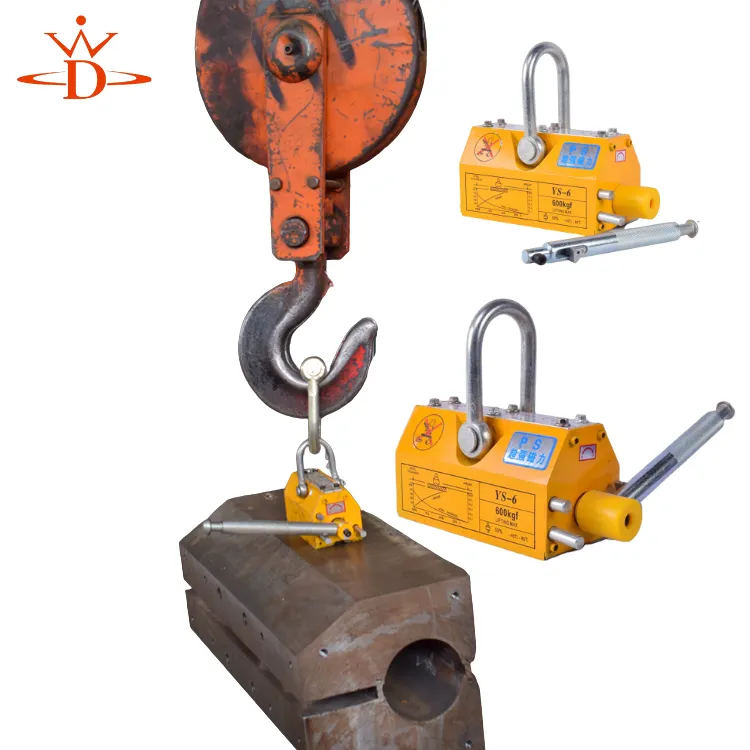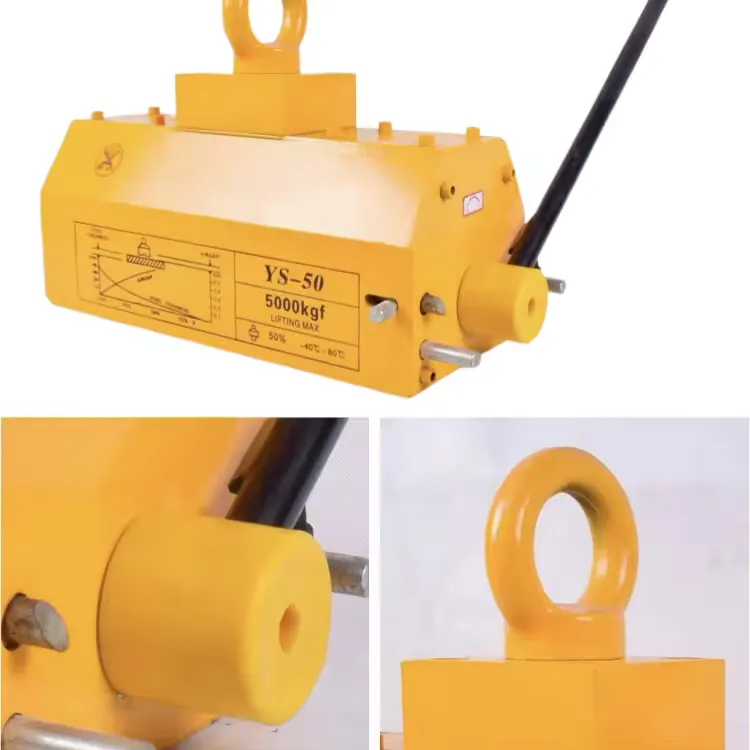Permanent Lifting Magnet—Safe, Strong, Portable: Need One?
Inside the YS Series: A Field Look at Dawei’s Permanent Magnetic Lifters
If you’ve spent time around steel service centers, shipyards, or just a scrappy fabrication shop with too few hands on deck, you already know the quiet revolution: swapping chains and clamps for an permanent lifting magnet. It seems simple—flip a lever, pick the load, go—but the real story is engineering, standards, and reliability under not-so-perfect conditions.

What’s inside the YS Series (and why it matters)
Dawei’s YS series uses rare-earth NdFeB cores, precision-machined pole shoes, and a cam-actuated on/off handle. The housing is stout (lightweight for its class, to be honest), and the feel of the lever—this is something many customers mention—clicks positively so operators trust the lock. From docks to warehouses, the YS units are designed to move plate and cylindrical ferromagnetic workpieces with fewer slings and less faff.

Product snapshot: Dawei Permanent Magnetic Lifter–YS Type
- Rated loads: 100, 200, 400, 600, 1000, 2000, 3000, 5000 kg
- Use cases: plate, rounds, machine-shop parts, flame-cut pieces
- Origin: Donglv Industrial Park, Qingyuan District, Baoding, Hebei, China 071100
| Model | Rated Load (kg) | Typical Breakaway Test | Indicative Unit Weight |
|---|---|---|---|
| YS-100 | 100 | ≈3× rated (clean plate) | ≈3–5 kg |
| YS-200 | 200 | ≈3× rated | ≈6–8 kg |
| YS-400 | 400 | ≈3× rated | ≈10–15 kg |
| YS-600 | 600 | ≈3× rated | ≈18–25 kg |
| YS-1000 | 1000 | ≈3× rated | ≈30–45 kg |
| YS-2000 | 2000 | ≈3× rated | ≈60–80 kg |
| YS-3000 | 3000 | ≈3× rated | ≈90–110 kg |
| YS-5000 | 5000 | ≈3× rated | ≈110–140 kg |
Real-world performance varies with plate thickness, surface roughness, temperature, and air gaps. Always follow the device nameplate and standards.

Manufacturing, testing, and standards
Materials: rare-earth NdFeB magnet sets, low-carbon steel yoke/pole shoes, treated cam and handle. Methods: CNC machining of pole faces, controlled magnet charging, torque-verified lever locking, then pull-off testing on certified steel coupons. Testing: factory pull tests target ≈3× rated load on clean plate at ambient conditions, aligned with common practices in ASME B30.20/BTH-1 design criteria and EN 13155 guidelines. Certifications: ISO 9001 quality management at the facility; CE documentation available on request. Service life: many units run 10+ years with periodic inspection—keep them clean, avoid shock loading and high heat.

Where it’s used (and two quick wins)
- Steel warehouses: fast plate picks without slings; fewer pinch points.
- Machine shops: staging flame-cut parts and rounds, surprisingly nimble.
- Shipbuilding and yards: pipe shop handling (use V-groove face), fewer re-rigs.
- Docks and logistics: quick load/unload on mixed SKUs.
Case 1: A Hebei service center swapped two chain slings for a permanent lifting magnet plus spreader beam; cycle time dropped ~22% on 6–20 mm plates. Case 2: A fabrication shop reported fewer paint scuffs versus hooks and clamps—small thing, but it saved rework hours.

Vendor landscape (pragmatic view)
| Vendor | Range | Design/Safety Factor | Certs | Lead Time | Notes |
|---|---|---|---|---|---|
| Dawei YS | 100–5000 kg | Stated ≈3:1 tests | ISO 9001, CE | Usually short | Good value; widely used in docks/warehouses |
| Generic Import | 100–3000 kg | Varies | Basic docs | Varies | Check QA and test sheets carefully |
| Premium EU Brand | 150–3000 kg | 3:1 (published) | EN 13155 focus | Medium–long | Higher cost; extensive documentation |

Customization and usage tips
- Custom pole shoes for thin plate or rounds.
- Tagging/traceability: serial, batch, test records.
- Operator training: surface prep, minimum thickness, temperature limits.
- Inspection schedule: daily visual; periodic pull-test as per site policy.
Field feedback? Operators like that a permanent lifting magnet reduces sling changes and keeps hands off pinch zones. Management likes the faster turns. I guess that’s a win-win.

If you’re speccing one, match the rated load to your thinnest plate and worst surface you’ll actually see—not the best day on the shop floor. And confirm compliance against your site standard before sign-off.
Dawei Hoisting, Donglv Industrial Park, Qingyuan District, Baoding City, Hebei Province, China 071100
- ASME B30.20 Below-the-Hook Lifting Devices; ASME BTH-1 Design of Below-the-Hook Lifting Devices.
- EN 13155: Cranes – Safety – Non-fixed load lifting attachments.
- ISO 9001: Quality management systems – Requirements.
-
Dawei Hand Pallet Truck 1200mm, 2000–5000 KGS Heavy-DutyNewsNov.17,2025
-
Dawei Hand Pallet Truck, Fork Length 1200mm, 2000–5000kgNewsNov.17,2025
-
Large Equipment Movers – Safe, Insured & On-Time ServiceNewsNov.17,2025
-
Machine Moving Dollies | Heavy-Duty, Low-Profile, SafeNewsNov.17,2025
-
Permanent Lifting Magnet - Heavy-Duty, Safe, Quick ReleaseNewsNov.11,2025
-
PML 1000 Lifting Magnet - Heavy-Duty, Safe, No PowerNewsNov.11,2025
-
Large Equipment Movers: Safe, Fast, Certified ProsNewsNov.11,2025
